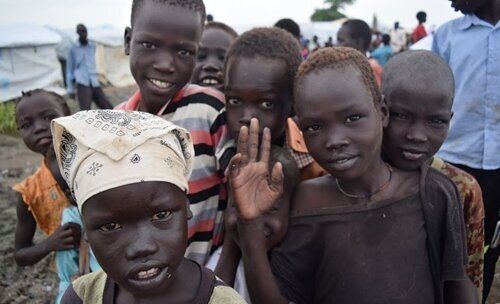
© Carla Fibla Garcia-Sala for Action Against Hunger
From UN secretary general Ban Ki-moon to Hollywood A-lister Keira Knightley - the world has begun talking about the impending food crisis in South Sudan. And with good reason.
The IPC (Integrated Food Security Phase Classification) - the world's authoritative source on the matter - warned in June 2014 of "pre-famine" conditions across the country. This has centred the debate almost exclusively on whether a fully-fledged famine will eventually be declared and, if so, when and where the label will be granted.
The 'f' word has become the story. But the real story is not simply that famine may be declared. The real story is that half of all children already affected by extreme levels of malnutrition will not get the help they need.
We can now deliver a humanitarian response that was unavailable in the famines of the 1980s and 1990s. Then, the backbone of the humanitarian response was a handful of scattered field hospitals (or therapeutic feeding centres) - expensive facilities delivering high quality treatment to the handful of cases that they could accommodate.
The real story then was not what was happening inside these hospitals, but what was happening outside; the lines of mothers, fathers and grandparents waiting for beds to be freed and for their children to be given a chance to receive life-saving treatment.
Today, severe malnutrition is treated at home, with parents effectively becoming de facto health providers. But for this model to succeed, we need enough delivery points to provide carers with life-saving treatment products they can take home (usually a peanut butter-like product capable of rehabilitating a malnourished child in weeks).
In South Sudan, there simply aren't enough of these points. At the time of writing, just 283 were available, located in around only half of the country's 83 counties.
Of course, more delivery points can be established, and many humanitarian organisations are gearing up to expand the network. But aid workers face a country with virtually no paved roads and a rainy season that turns much of South Sudan into an archipelago of isolated communities.
Maintaining a network in this context demands a strong pipeline and regular air bridges. Both have been established in the past but are simply too expensive to (re)establish at a time when South Sudan competes for limited donor funds with emergencies such as the Central African Republic, Gaza, Iraq and Syria.
In a normal year this would make a crisis in South Sudan difficult to respond to. But this is not a normal year.
This is the year when the armed conflict finally exploded; when more than 1.3 million South Sudanese were displaced and now struggle to find sanctuary under the constant threat of ethnically motivated attacks.
The man-made violence that has led (again) to starvation is also hampering humanitarian response. There have been direct attacks on humanitarian agencies, including the recent execution of six aid workers in the region of Maban county, making organisations understandably reluctant to venture at scale into conflict-affected areas such as Unity, Jonglei and Upper Nile. This is partly why less than half of the nutrition facilities are in these high-need areas.
However, if half of all malnourished children never reach life-saving treatment in South Sudan, it is also because of the quality and reach of the programmes that are available.
In 2012, a group of humanitarian organisations, led by Action Against Hunger, began reviewing the performance of nutrition services in more than 25 countries, including South Sudan. This Coverage Monitoring Network sought to evaluate the proportion of children suffering from malnutrition who were being reached by home nutrition services.
The aim was not to evaluate whether services were available everywhere, but rather, whether children in areas where services were available were using them. The answer was no.
On average, nutrition services reach between 34 and 55 per cent of the children needing treatment. In South Sudan, most programmes surveyed reached barely half of the children in need. In most cases, there were simply too few delivery points, too far apart.
Most nutrition services are run on the basis that if you build it, people will come. But they don't.
In South Sudan this year, many malnourished children will not reach treatment partly because their parents do not know that the services are there.
Humanitarian organisations can blame the lack of services on a perfect storm of seasonal, political, economic and security factors, which have again collided to create "pre-famine" conditions in South Sudan. But this would not be the full story.
The full story is that half of the malnourished children in need of treatment will not be able to access it.
Whilst the actions of warring parties in targeting civilians are the principle obstacles, the humanitarian community will have to shoulder part of the blame for failing to adapt practices and bring services to scale.